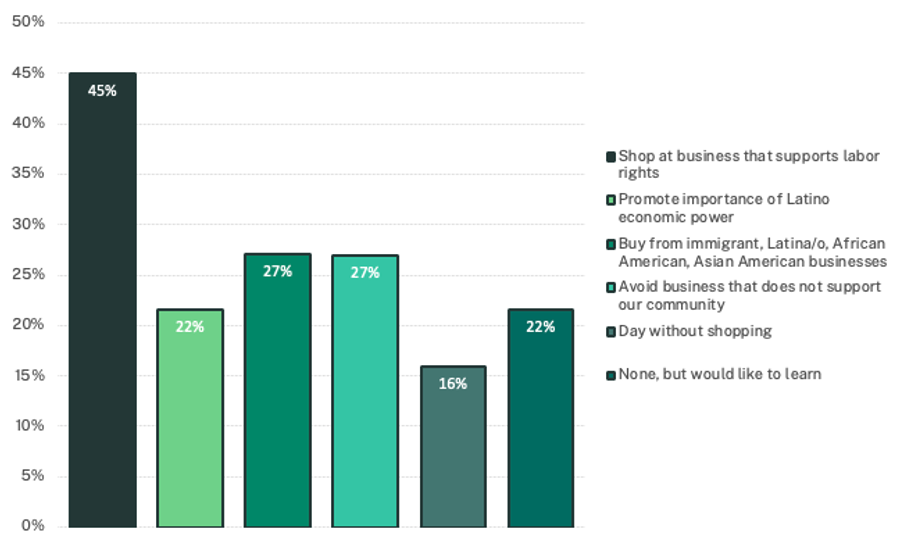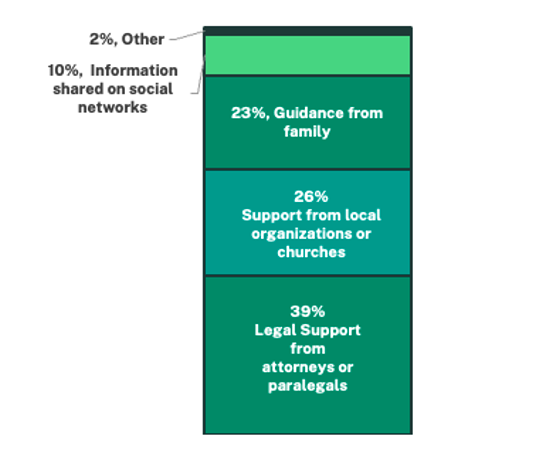Responding with Courage: How Spanish-Speaking Immigrants Report Being Impacted by the New Deportation Regime
Immigrants have long been a vital part of the economic and social framework of the United States. While immigrants make up roughly 14 percent of the total population in the U.S., they account for 17 percent of the national GDP and labor force.1 Immigration Research Initiative, Data in Detail: United States, https://immresearch.org/work/state-immigration-project/united-states/?wdt_search=United%20States Immigrants are also more likely to be business owners, especially in businesses we rely on each day like nail salons, grocery stores, and restaurants. Their presence is deeply felt across every part of daily life from doctor’s offices to corner stores, classrooms to boardrooms, and every space in between. Immigrants bring richness to everyday life. In addition to their significant economic contributions, immigrants are valuable members of our communities: they are our neighbors, our coworkers, our children’s schoolmates and they are in peril and feeling the pain right now. Despite this, the new federal administration’s immigration agenda seeks to sow fear among immigrants by promising to deport millions of people who are undocumented and even threatening to de-document legal residents and visa holders
News reports have highlighted how thousands of individuals and families have been ripped from their homes and communities as these mass deportation efforts have begun. Others have documented the alarming extent to which immigration authorities are willing to go including raiding churches, schools, workplaces and other sacred community spaces. Despite fears about how new immigration policies might affect them, millions of immigrants continue to go to school, work, and various other forms of social interaction each day.
To better understand how changes to the federal deportation regime have impacted immigrants in their daily lives, Immigration Research Initiative partnered with Noticias Para Inmigrantes to conduct a nationwide survey of Spanish-speaking immigrants. The survey took place March 14 – 21, 2025. In all, more than 2,000 immigrants responded to the survey, which asked questions about media consumption, political behavior, social supports, and how immigrants have been impacted in their daily lives by the new deportation regime. The results show that the rhetoric and mass deportation efforts of the Trump administration have been having a negative impact among immigrants, especially Spanish-speaking immigrants. Despite facing new hurdles, many immigrants have shown tremendous resiliency and continue to go about their daily activities in the face on an increasingly hostile political environment.
This study finds that many Spanish-speaking immigrants feel the immigration climate has significantly changed for the worse in the current enforcement regime and are protecting themselves from the threat of encounters with hostile federal immigration agents by actively avoiding things like going to work, taking their children to school or church, and applying for or renewing social benefits for which they qualify. We see this for immigrants who are undocumented, those who have visas, and those with provisional status such as temporary protected status (TPS) or humanitarian parole, we see it for people who have green cards and even for those who are naturalized citizens.
While the federal administration currently seeks to sow fear among immigrants, especially immigrants of color, most have shown remarkable resiliency in the face of increasingly difficult circumstances. Many findings in this study highlight how immigrants continue to live full and connected lives by going to work, supporting immigrant-owned businesses, and providing care within their communities through local organizations and grassroots efforts.
Some of our key findings include:
- A dramatic change in the immigration climate. More than half of all respondents (52 percent) said they have been impacted by recent changes in the new immigration enforcement regime, including 30 percent who said they were “extremely affected.”
- Facing down discrimination. Over half of survey respondents (54 percent) expressed that in the last three months they have experienced at least moderate discrimination. Despite this, respondents also expressed their resiliency in standing up against xenophobia by continuing to live full and healthy lives in the face of an increasingly hostile environment.
- It’s affecting local economies. Two in five say they have had to miss work because of the federal government’s new immigration agenda. There is a widespread chilling effect that includes immigrants with temporary or provisional work permits, and even some who hold green cards or are naturalized citizens, in addition to those who do not have documentation. Many immigrants of all statuses are deciding to stay home as much as possible to avoid any interaction with immigration authorities, which also reduces their consumption and contribution to local economies.
- Voting with our pocketbooks. Many Spanish-speaking immigrants say they go out of their way to support businesses owned by other immigrants and people of color and avoid businesses that do not reflect their values.
- An unmet need for legal services. While 40 percent of respondents said they have relied on some form of legal support in the past three months, more than half said they do not have access to legal support if they need it.
- An inflamed social media environment. Most respondents get their news from some combination of social media and traditional news sources, but many also reported frequently engaging with what they identified as false or misleading information on social media platforms.
How The New Deportation Regime is Affecting Daily Life for Immigrants
The new U.S. immigration enforcement regime has had far-reaching implications for immigrant communities. Since taking office in January 2025, the Trump administration has prioritized aggressive immigration policies, including promises of mass deportations. These narratives and actions are already reshaping daily life for immigrant communities across the United States.
On the day that this survey went live, video of Columbia University activist Mahmoud Khalil’s abduction was released Khalil holds a green card, and his wife is a U.S. citizen, as is their son who was born while Khalil was being held.2Jonah E. Bromwich, “Mahmoud Khalil’s Wife Gives Birth as ICE Bars Him from Being There,”New York Times, April 21, 2025 Just a few days later, despite a judge ordering the Trump administration to turn around planes deporting a different group of immigrants back to the U.S., but the administration defied the order.3Luke Broadwater, Albert Sun, Annie Correal and Chris Cameron, “A Judge Ordered Deportation Planes to Turn Around. The White House Didn’t Listen,”New York Times, March 17, 2025 On March 20th the Trump administration sent a new group of migrants to the U.S. military base at Guantánamo Bay, Cuba, to await deportation, claiming, without any evidence, that they may have ties to a Venezuelan gang.4Carol Rosenberg Charlie Savage and Hamed Aleaziz, “Trump Administration Sends a New Group of Migrants to Guantánamo Bay,”New York Times, March 20, 2025. To cap the week, we learned that Trump revoked the legal status of 530,000 Cubans, Haitians, Nicaraguans and Venezuelans which is planned to go into effect at the end of April 2025.5Ted Hessen, “Trump revokes legal status for 530,000 Cubans, Haitians, Nicaraguans and Venezuelans,”Reuters, March 24, 2025. It was in this context that the participants were making their voices heard in our survey and sharing their own lived experiences.
Among the most important findings of this research was the fact that more than half of the respondents said they had been at least moderately impacted by the new deportation regime, with fully 30 percent saying they were extremely impacted. This finding confirms other recent research into how immigrants have been affected by the changes imposed by the Trump administration. These essential activities included taking their kids to daycare or school, going to the doctor, and driving a car.
Our research further builds on this inquiry by exploring the level of the respondents’ concerns and how they are impacting essential daily activities. The results illustrated the duality of the immigrant experience is even more pronounced. While many immigrants continue to show up for their families and communities by carrying out daily responsibilities, the impact of a radically changed immigration enforcement environment has made it harder for many to access work, school, and other public spaces.
Figure 1 shows that 40 percent of all respondents said they had been impacted in some way in their capacity to go to work. In a follow-up question, respondents were asked how many days of work they had missed due to new immigration enforcement context. Responses ranged from as little as a few days to as long as several months
TWO IN FIVE SPANISH-SPEAKING IMMIGRANTS SAID THE CURRENT POLITICAL CLIMATE HAD IMPACTED THEIR CAPACITY TO GO TO WORK
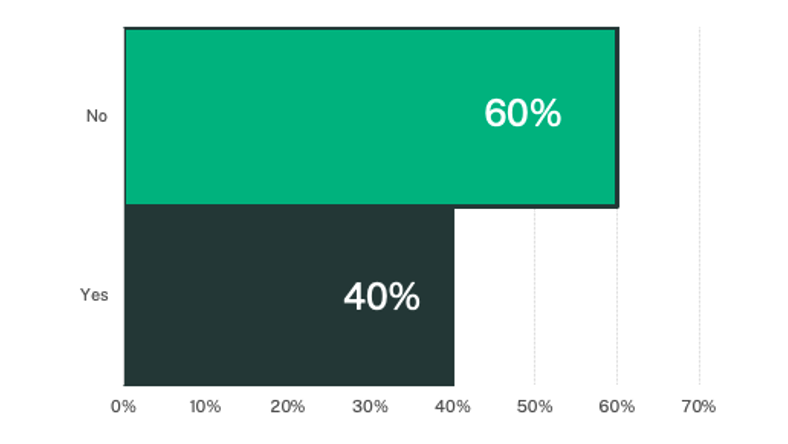
Fig 1. Immigration Research Initiative analysis of IRI-NPI survey administered March 14-21, 2025.
Some respondents said they were concerned about going to work for fear of interacting with immigration authorities, while others said they did not feel confident enough even to leave the house. Others say they have been unable to work because their previous jobs are now asking for work permits before accepting workers for jobs.
Figure 2 shows how people of varying statuses reported whether they have been impacted in their capacity to work. As shown below, 36 percent of those with provisional status—that is, those who have at least temporary work authorization such as asylum seekers—say they have missed work due to the immigration enforcement apparatus’ new agenda. The same percentage of visa holders reported they had been affected in their capacity to work as well.
EVEN THOSE WITH WORK AUTHORIZATION SAW A SIGNIFICANT IMPACT ON THEIR CAPACITY TO WORK
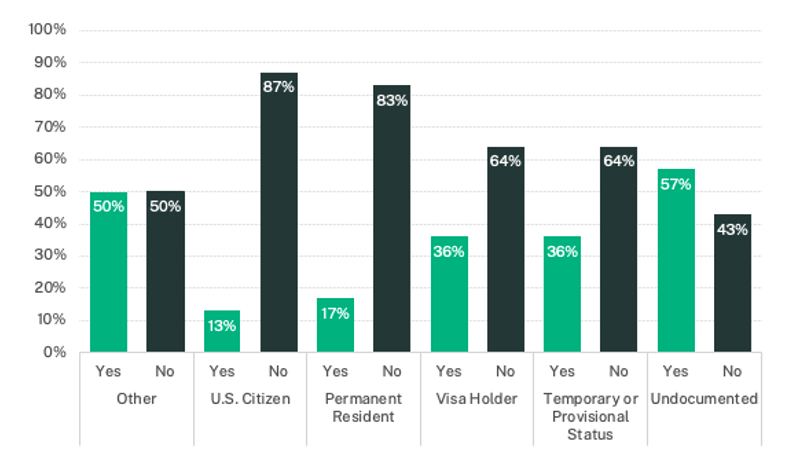
Fig 2.Immigration Research Initiative analysis of IRI-NPI survey administered March 14-21, 2025.
These findings suggest that even people who had work authorization were either afraid to go to work at some point, or were otherwise unable to find work, as a result of the new climate around immigration. These findings varied by state, where immigrants were sometimes more impacted than others based on the local political climate. In Texas, for example, 46 percent of Spanish-speaking immigrants said they had been impacted in the ability to work as compared to 39 percent of those in California. It was interesting, however, that among immigrants in Florida—where the political climate around immigration more closely resembles that of Texas than New York or California—29 percent of respondents said they had missed or lost work because of the new immigration enforcement regime.
IMPACTS ON ABILITY TO WORK VARIED BY STATE
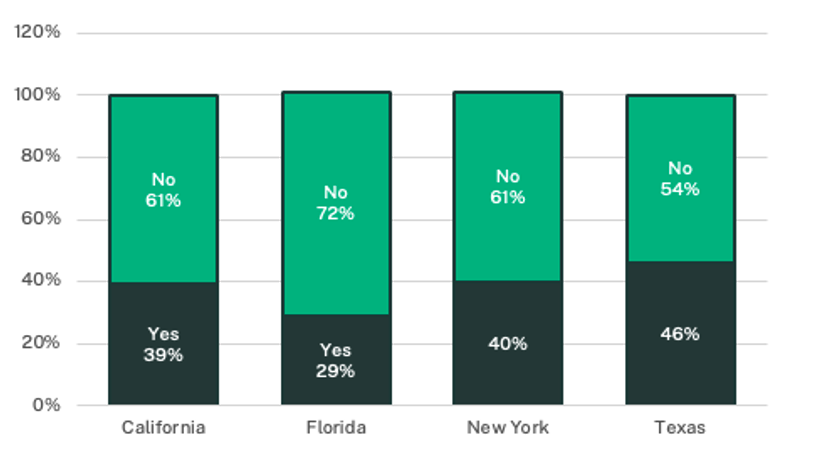
Fig 3. Immigration Research Initiative analysis of IRI-NPI survey administered March 14-21, 2025.
In addition to being impacted at work, many respondents said the current climate around immigration made life more difficult when it came to taking their children to school, going to church, or visiting a doctor’s office. In that regard, 45 percent of all respondents said they had been worried about engaging in these activities in the past three months. This finding supports what the Urban Institute found in their research, which reported that two-thirds of adults in mixed-status families had experienced fear.
This fear around essential activities like going to church, taking children to school, and going to the doctor’s office is deeply concerning, as it can disrupt the regular behavior of thousands of families and communities across the United States. The impact was felt across immigration statuses. As shown in Figure 4 below, undocumented immigrants experienced the most fear around essential activities, with 66 percent saying they felt more fear than before, but virtually all immigrant groups experienced some fear. For example, 55 percent of those who said they had temporary or provisional status said they experienced more fear than since before Trump took office as did 34 percent of visa holders and 21 percent of legal permanent residents.
IMMIGRANTS EXPERIENCED FEAR REGARDLESS OF IMMIGRATION STATUS
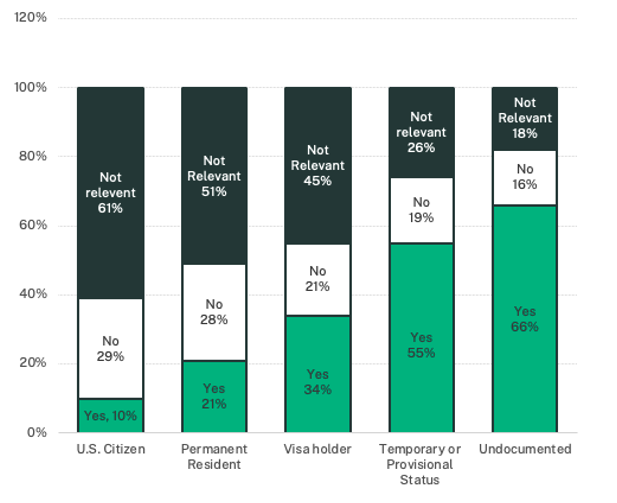
Fig 4. Immigration Research Initiative analysis of IRI-NPI survey administered March 14-21, 2025.
What was most shocking in our data set is how often individuals felt the need to change their behaviors in order to keep themselves and their families safe. Overall, 21 percent of respondents in our survey said they had not just been concerned, but in fact avoided going to church, the doctor’s office, or taking their child to school due to the threats they saw around new immigration enforcement regime. It is remarkable, however, that while so many immigrants have experienced fear around essential activities, the vast majority continue to go about their daily lives. This highlights the resiliency of immigrant communities to keep going about their lives even as the Trump administration tries to sow fear and push people out of their communities and daily routines
Many respondents did say they have taken some form of safety measure to protect themselves from discrimination, immigration authorities, and other deterrents to their daily lives. Overall, 45 percent said they have avoided certain places and situations, though the results are unclear about exactly which places those are. Another 45 percent said they stay at home as much as possible and avoid going out in public if they do not have to. Similarly, 41 percent said they are always on alert as to whether or not they might encounter immigration authorities or other dangerous situations. Another 15 percent said they avoid speaking Spanish in public to avoid extra attention and 16 percent said they try to be mindful about their outward appearance as to not draw added attention to themselves.
Political Behaviors Among Immigrants
This is a politically charged moment for immigrant communities. In addition to navigating an increasingly hostile federal landscape, many immigrants are also contending with harmful state and local actions that threaten their wellbeing. Rather than stepping back, immigrant communities are stepping up into political spaces by taking action to protect their loved ones, advocate for their rights, and shape a future grounded in collective care and justice.
The clearest expression of this can be seen in how Spanish-speaking immigrants practice solidarity through their everyday spending intentionally supporting businesses that reflect their values and support their communities. The biggest share of people, 45 percent, said they try to spend their money at businesses that support labor rights. Over a quarter (27 percent percent) consciously support businesses run by immigrants, Latino/as, African Americans, or Asians, and the same share consciously avoid businesses that they feel do not support our communities. These choices reflect a deeper commitment to justice, solidarity, and community power not just as consumers, but as advocates working to build an economy and a country that reflect their values.
EXPRESSING YOUR VALUES IN WHERE YOU TAKE YOUR BUSINESS
Fig 5. Immigration Research Initiative analysis of IRI-NPI survey administered March 14-21, 2025.
Going even further, six percent said they had actively participated in an organized protest in the last three months (prior to March 2025). Five percent had signed a petition, and seven percent put up a pro-immigrant post on social media, and three percent of respondents called a politician.
Roughly the same share reported participating in these activities prior to 2025, with slightly higher numbers (eight percent compared to xix percent) saying they had been at a protest, and slightly smaller numbers (six percent compared to seven percent) posting on social media.
ACTIVE PROTESTS
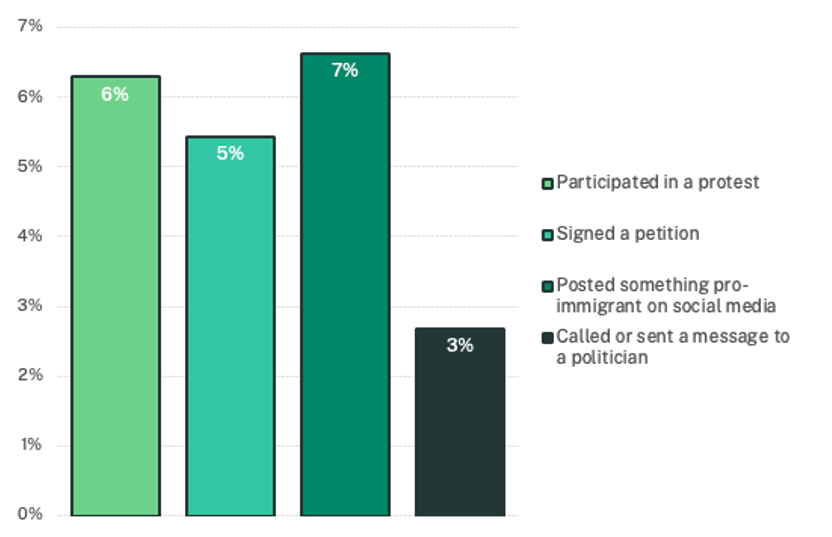
Fig 6. Immigration Research Initiative analysis of IRI-NPI survey administered March 14-21, 2025.
Immigrants are eager to know their rights and find a number of ways to do that. Social media plays the biggest role, with 72 percent choosing that as the main way they get information about what to do if an immigration agent stops or approaches them, including 54 percent who found the information themselves and 18 percent who had someone send it to them. Sixteen percent talked with someone individually about how to respond, six percent participated in a workshop on the topic, and another six percent mentioned other methods, such as television advertisements, at church, or talking with a lawyer.6 For this question, people could choose only one main answer.
BEST WAYS TO KNOW YOUR RIGHTS
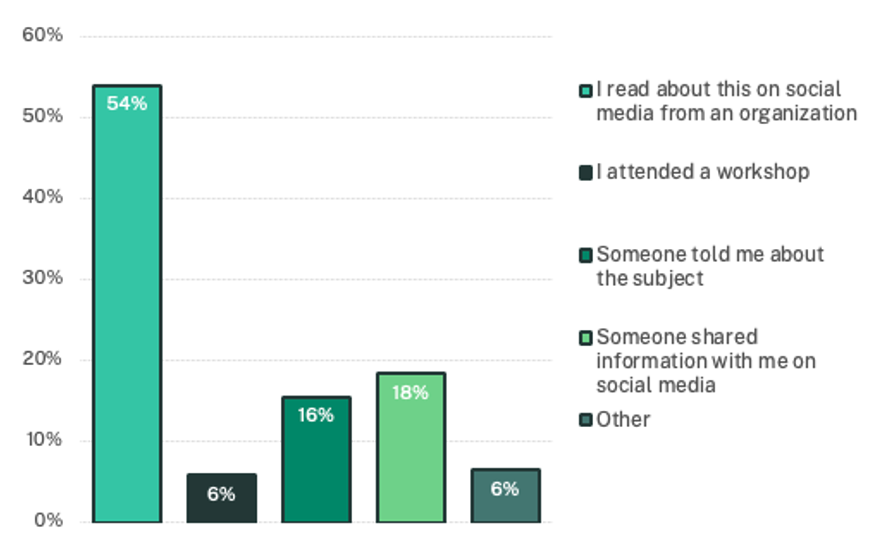
Fig 7. Immigration Research Initiative analysis of IRI-NPI survey administered March 14-21, 2025.
Overall, 45 percent of respondents felt confident that they know their rights if they are approached by an immigration officer. That share is higher in California, where 50 percent of people feel that confidence, and lower in Florida, where the share is just 36 percent.
RESPONDENTS ARE MORE CONFIDENT THEY KNOW THEIR RIGHTS IN CALIFORNIA THAN IN FLORIDA
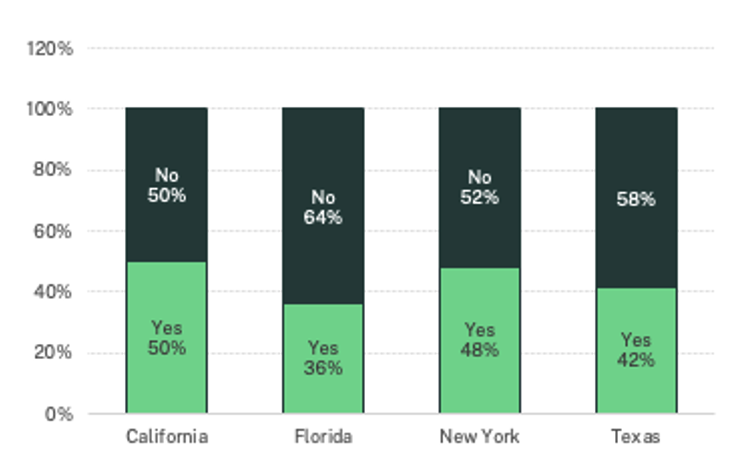
Fig 8. Immigration Research Initiative analysis of IRI-NPI survey administered March 14-21, 2025.
Personal Views Do Not Always Align with Media Outlet Opinion
Immigrant communities are navigating a media environment flooded with anti-immigrant messaging designed to confuse, mislead, and divide. In response, many are turning to trusted sources to stay informed, make sense of rapidly changing narratives, and protect their families and communities from fear-driven misinformation.
More than two thirds of survey respondents (69 percent) expressed that in the last three months, they have read or watched the news more than before, following by 24 percent who expressed they still watch the news the same as before, six percent expressed less than before and a small two percent said they hardly ever read or watch the news.
The rise in news consumption may reflect a growing desire among immigrants to stay informed, particularly as immigration enforcement remains a central focus of the federal government.
There are various ways to read, hear or watch the news from television, to newspapers, to the internet. This study highlights how social media has become a leading source for immigrants seeking political information, staying connected to their communities, and making sense of rapidly changing enforcement actions in real time. Almost three quarters of survey respondents (72 percent) stated they got their political information from social networks, 23 percent from television, two percent from radio and one percent from friends and family.
When asked about how newscasters from the coverage they consume talk about deportation, over half (52 percent) said that the coverage is at least moderately against deportations—with 24 percent reporting that the coverage is moderately against deportations and 28 percent strongly against deportations. Of the survey respondents, 24 percent said the news coverage they watch is neutral against deportations, eight percent said moderately in favor of deportations and 23 percent said strongly in favor of deportations.
Although 31 percent of survey respondents expressed that the news coverage they consume is at least moderately in favor of deportations, this does not align with their personal views on deportations.
Almost three quarters of all survey respondents (71 percent) expressed being at least moderately against deportations with more than half (52 percent) strongly against deportations, 19 percent being moderately against deportation, 12 percent neutral about deportations and a small three percent moderately in favor of deportations with an even smaller one percent strongly in favor of deportations
ALMOST THREE QUARTERS OF SURVEY RESPONDENTS ARE AT LEAST MODERATELY AGAINST DEPORTATIONS
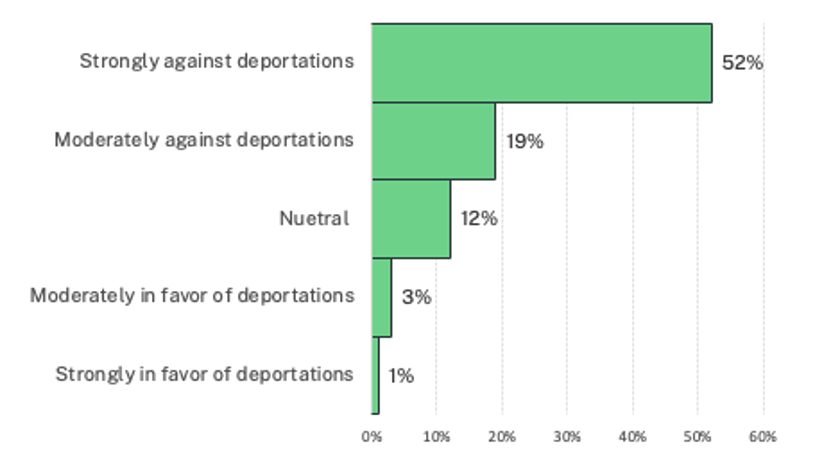
Fig 9. Immigration Research Initiative analysis of IRI-NPI survey administered March 14-21, 2025.
When feelings about deportations are examined by length of time in the United States, no major differences are present and the results reflect the overall views of the survey respondent: with 73 percent of those in the U.S for 21 years or more at least moderately against deportations, 71 percent of those in the U.S. for 11-20 years, 63 percent of those in the U.S. 6-10 years, 70 percent of those in the U.S. for 1-5 years and 72 percent of those in the U.S. for less than one year.
This study shows that immigrants’ views on deportation are shaped by personal or community experiences and navigated in relation to media.
This presents an opportunity for social media news which has become an influential space where information is compared to lived experience, a place where people can safely turn to stay informed, find clarity and experience solidarity.
It also highlights the urgent need for trusted messengers with meaningful social media community connections, and for expanded access to culturally relevant reporting. In doing so, immigrant communities can continue to see their shared values and stories reflected in the news they engage with on social media.
Immigrants Are in Need of Essential Legal Supports
Across the country, immigrants are facing growing threats to their safety in the United States, making access to legal support more urgent than ever. Legal services are essential tools for immigrants to know their rights while navigating complex and uncertain immigration systems. As federal anti-immigration enforcement has intensified since early 2025, the need for accessible, trusted legal guidance that speaks to people’s personal situations has only grown.
According to a 2016 analysis by the American Immigration Council, only 37 percent of all immigrants and 14 percent of detained immigrants are represented in court by legal counsel.7American Immigration Council, “Access to Council in Immigration Court,” September 2016, https://www.americanimmigrationcouncil.org/sites/default/files/research/access_to_counsel_in_immigration_court.pdf An even higher percentage of immigrants who completed our survey lack access to legal services: with over half (53 percent) stating they do not have access to legal services if they needed it.
OVER HALF OF SURVEY RESPONDENTS DO NOT HAVE ACCESS TO LEGAL SERVICES
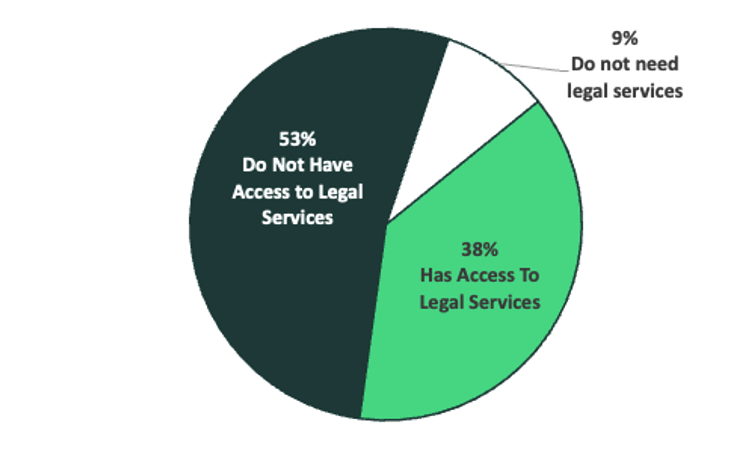
Fig 10. Immigration Research Initiative analysis of IRI-NPI survey administered March 14-21, 2025.
Access to legal services can vary by state due to state funding for these services, the number of community-based organizations who provide connections, geographic challenges and the number of lawyers who practice in the state. The lack of access to legal services is still high when examined by state: with 48 percent of survey respondents in California stating they do not have access to legal services, 40 percent in Florida, 59 percent in New York and 55 percent in Texas. In many states, immigrants do not know about legal supports such as hotlines to report raids, arrests or deportations. Of our survey respondents, 74 percent of Texans, 70 percent of New Yorkers and 56 percent of Californians, and a staggering 80 percent of Floridians did not know if there were hotlines to report raids, arrests or deportations.
Access to legal services also varies by immigration status. Over three quarters (76 percent) of undocumented immigrants who responded to our survey, expressed that they did not have access to legal services if they needed them. Our research finds that immigrants who have some form of legal status, have greater access to legal services.
UNDOCUMENTED IMMIGRANTS ARE MORE LIKELY TO LACK ACCESS TO LEGAL SERVICES
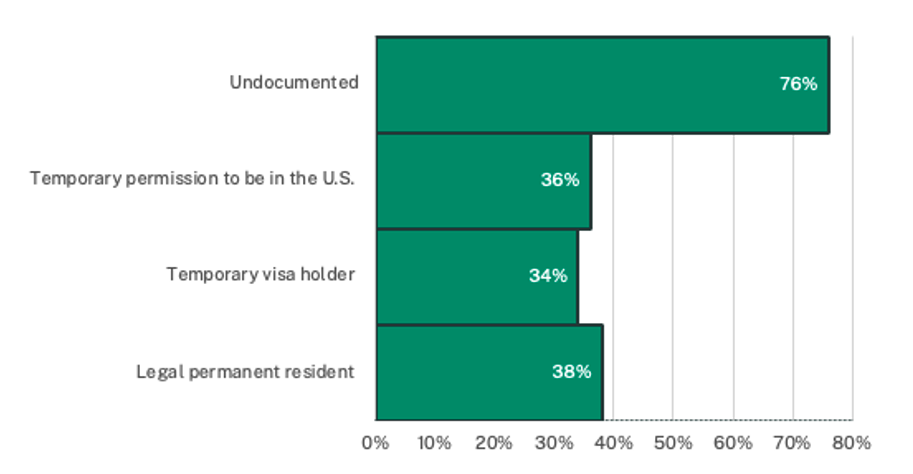
Fig 11. Immigration Research Initiative analysis of IRI-NPI survey administered March 14-21, 2025.
Our research also found that how long an individual has been residing in the United States does not increase their access to legal services. In all ranges of years in the U.S., more than half of immigrants in each range do not have access to legal services: with 58 percent of those living in the U.S. for less than a year, 51 percent of those living in the U.S. for 1-5 years, 55 percent of those living in the U.S. for 6-10 years, 57 percent of those living in the U.S. for 11-20 years, and 51 percent of those living in the U.S. for 21 years or more
INCREASED YEARS IN THE U.S. DOES NOT INCREASE ACCESS TO LEGAL SERVICES
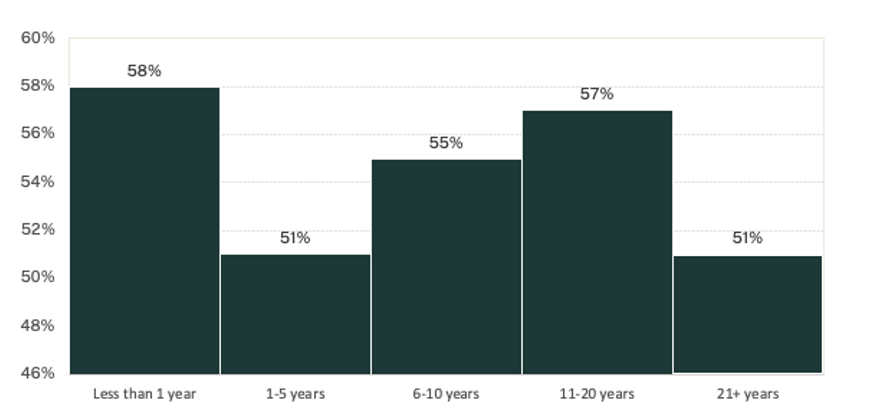
Fig 12. Immigration Research Initiative analysis of IRI-NPI survey administered March 14-21, 2025. Note: Represents those who responded that they do not have access to legal services.
Legal representation in immigration cases greatly increases the chances of an immigrant’s ability to win their cases and remain in the United States. Of detained immigrants, 32 percent who are represented by counsel won their cases, compared to only three percent who are unrepresented. Among non-detained immigrants, 78 percent who are represented by counsel successfully win their cases and can remain in the United States compared to 15 percent of those are non-detained who lack legal representation.8 New York Immigration Coalition, “No Safe Harbor: The Landscape of Immigration Legal Services in New York,” February 2020, http://nyic.org/wp-content/uploads/2020/02/NoSafeHarbor_Final2020.pdf
Immigrants face multiple systemic barriers to accessing legal support including limited state funding for affordable services, a shrinking number of legal providers, language access challenges, and difficulty connecting with community-based organizations offering legal services or “Know Your Rights” trainings.
In response, many immigrants take proactive steps to understand their rights by turning to trusted sources such family members, churches, and local organizations and social media. These networks often fill critical gaps offering culturally relevant support and community-driven knowledge.
Since legal representation can be costly, and many families or individuals may not have the resources to secure counsel, many immigrants make intentional efforts to learn about their rights from various credible and trusted sources such as social networks, family members, and local organizations or churches.
OVER ONE-THIRD OF SURVEY RESPONDENTS FELT LEGAL SUPPORT FROM ATTORNEYS WAS THE MOST HELPFUL IN NAVIGATING IMMIGRATION CHALLENGES
Fig 13. Immigration Research Initiative analysis of IRI-NPI survey administered March 14-21, 2025.
Thirty-nine percent of survey respondents felt that legal support from attorneys or paralegals were the most helpful when navigating challenges related to immigration, followed by 26 percent who felt information shared on social networks was the most helpful, followed by 23 percent expressing local organizations and churches and 10 percent who felt guidance from family was the most helpful.
Resiliency Against Adversity: Standing up to Xenophobia
Immigrant communities continue to show strength and solidarity in the face of rising discriminatory rhetoric and xenophobic encounters. Efforts to divide communities through fear and harmful stereotypes are being amplified in the current climate. Still, immigrants are organizing, learning about their rights, speaking out, and protecting one another. The immigrant community power is being rooted in trust, care, and solidarity.
Over half of survey respondents (54 percent) expressed that in the last three months they have experienced at least moderate discrimination, with 22 percent expressing they experienced high amounts of discrimination compared to 47 percent who expressed they felt low amounts of discrimination. To measure levels of discrimination we asked about experiences of being treated as less intelligent, receiving bad service in restaurants and stores, fear from others, being treated less nicely than others and being threatened.
OVER HALF OF SURVEY RESPONDENTS EXPERIENCED AT LEAST MODERATE AMOUNTS OF DISCRIMINATION IN THE LAST 3 MONTHS
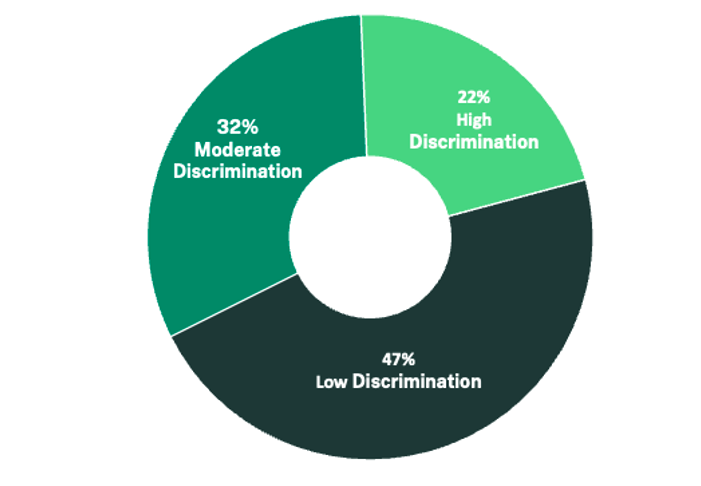
Fig 14. Immigration Research Initiative analysis of IRI-NPI survey administered March 14-21, 2025.
Many survey respondents expressed shared experiences of certain forms of discrimination such as microaggressions when speaking Spanish in public, discriminatory treatment in stores and at work, or discrimination due to simply being Latino/a or Hispanic.
Respondents expressed discriminatory experiences at various places in their community from work to government agencies, healthcare settings and in restaurants and stores. One respondent attributed their discriminatory experience in a healthcare setting to their perceived immigration status: “They ask me if I am legal in the country, especially at the clinic.” Another respondent attributed their discriminatory treatment in public places due to being a Spanish speaker: “People have looked at my son and me badly for speaking Spanish in public places, as if we were strange creatures.”
The federal administration’s use of anti-immigrant rhetoric both throughout the election campaign and while in office has emboldened individuals to be outwardly discriminatory towards immigrants. Survey respondents expressed explicit xenophobia from community members: “One time I went to a river near where I live, and a local citizen started yelling at us, saying that it was their river and that we should go back to our country,” “On one occasion, a person got upset because I was speaking in Spanish and yelled at me, saying that this is America, and that I should speak English since it’s the language here, and that we should go back to our country,” and “Just because I’m Latino, I’ve been told ‘this is not your country, go back to yours.’”
The spread of xenophobia by the federal administration is trickling down and seeping into the daily lives of immigrants. A respondent demonstrated that this xenophobia is so prevalent that it is even directed at people who are U.S citizens but because of how they look they are perceived to be an immigrant: “I have been made to feel discriminated against on public transportation, being yelled at with insults to go back to my country. The strangest thing is that even though I consider myself Latina and my parents are immigrants, I was born in the U.S. and I’m American, but just because of my face and skin color, they discriminate against me.”
Despite over half of survey respondents expressing that they face at least moderate amounts of discriminatory treatment from others in the U.S., survey respondents also expressed their resiliency in standing up against this xenophobia. Many survey respondents expressed a strong desire to know their rights, protect their families, access trusted information, and build dignified lives in the face of adversity.
Despite survey respondents stating they experience discriminatory behavior from others, some survey respondents do not let the xenophobic treatment alter their own behaviors. One survey respondent attributed their experience of discrimination to not speaking English, but this does not affect their work life: “I have felt rejected for not speaking the language. But this doesn’t prevent me from being useful and productive at work.” Another survey respondent highlighted their success as being self-employed despite facing challenges: “I studied English and have experience in sewing… Today, I work for myself; I started five months ago, and even though I face other challenges, I hope to keep doing it.”
Other survey respondents have taken intentional efforts to educate themselves on their rights as immigrants to protect themselves and their families. A survey respondent felt prepared because of their knowledge of their rights: “I am informed about my rights.” Other survey respondents also attributed their preparedness to their knowledge of their rights: “because I know my rights,” “I am clear about my rights,” “Yes, because I have read our rights,” and “I know that I have rights that are from the constitution.”
Some survey respondents highlighted the confidence they have in themselves to stand up to xenophobic treatment. One survey respondent stated that fear is present, but they are willing to be courageous to stand up for themselves: “Yes, but I would still get nervous because I’m very fearful. At the same time, I know I need to have the courage to stand up for myself.” Another survey respondent expressed similar sentiments and feels that if faced with immigration challenges, they will react confidently: “Prepared might not be the right word, because you never really know how you’ll react in the moment, but I am confident in myself.” When asked if they felt prepared if questioned by an ICE agent, another survey respondent expressed their confidence: “I feel confident.”
One survey respondent acknowledged the injection of misinformation into communities to create confusion, and their intentional efforts to seek out factual information and sincere help: “My documents are up to date, and I’m not afraid because if everything is in order, I don’t need to worry about my immigration status. Just like there’s trustworthy information out there, there’s also a lot of misinformation that only causes confusion. I prefer not to listen to that and only seek out people who are truly informed and prepared to help.”
Another survey respondent summed up the fears of many of those in both this survey and the Hispanic community and simultaneously highlighted the resiliency that many Hispanics have against xenophobic treatment and their desire to live a dignified life for themselves and their families in the United States: “The truth is, the situation that our Hispanic community is living through these days is really hard. It feels like psychological torture… I just pray to God that this passes soon, and that we can have peace, that we can be allowed to work, and that our children can go to school peacefully.
Methodology and Demographics
This research was conducted in partnership with Noticias Para Inmigrantes (NPI), a non-profit news organization that serves the Spanish-speaking immigrant population. Immigration Research Initiative and NPI worked together to construct a 42-question survey that asked questions about media consumption, political behavior, social supports, discrimination, and the impacts of the new deportation regime on daily life. The survey was constructed in English and then transcreated into Spanish.
Once the survey was transcreated into Spanish, we used a convenience sample of existing NPI subscribers from around the United States to gather 2,072 responses from Spanish-speaking immigrants. We used a targeted sample that purposely overcounted in certain states based on where immigrants are more concentrated. After collecting all the data, 591 respondents lived in California, 216 lived in Texas, 146 lived in Florida, and 152 lived in New York.
Once the responses were collected, IRI applied raked survey weighting to adjust for significant differences between the sample population and the real population of Spanish-speaking immigrants in the United States. Raked weighting is a survey weighting method that adjusts survey weights based on key demographic variables in the target population such as age, race, and gender.
We used raked survey weighting because it is generally good practice to make the sample population as representative of the overall population as possible. That said, none of the weighted responses exceeded five observations, indicating that the survey was already fairly representative of the total population of Spanish-speaking immigrants. For this survey, IRI used the 2022 5-year sample of the American Community Survey to establish target demographics for the Spanish-speaking immigrant population in the United States. We used years in the United States, gender, and age categories to establish key targets when conducting the raked weighting method. The resulting weights produced a more statistically representative sample of Spanish-speaking immigrants.
Once weighted, the demographic characteristics of the survey sample changed slightly but remained largely the same, indicating that the convenience sample was largely representative in the first place. For example, the unweighted share of respondents who said they had been at least moderately impacted by the new deportation regime was 53 percent, compared to 52 percent in the weighted sample. Still, the calculated weights were used in all tables and figures of this report.
In our sample, 66 percent of respondents were born in Mexico, six percent were born in Honduras, another six percent in Guatemala, and four percent were born in El Salvador. Additionally, 24 percent of respondents identified at white, 36 percent identified at Afro-Latino/a, and 99 percent identified at Latino/a or Hispanic.
In terms of legal status, it is important to note that 43 percent of respondents declined to share their legal status in the survey. In previous research, this has been used as a stand-in for undocumented, but considering how many people of different statuses expressed fear in the current political climate, that would be imprudent to assume about this sample. Of those who did disclose their status, 11 percent were naturalized citizens, 17 percent said they were undocumented, 13 percent said they have some form of provisional status, and 13 percent were legal permanent residents.
Most of the respondents (52 percent) have been in the United States for more than 20 years, with an additional 26 percent having lived in the U.S. for 11- 20 years
The authors would like to thank our partners at Noticias Para Inmigrantes, Ha Na Park, Laura Liibbe, Rocio Segura, and Irene Velarde Graciano for their extensive work in helping to craft the questionnaire and interpret the results, for all their work on translation and transcription, and for fielding the survey. Thank you for input on questions and interpretation from Ed Walz and Alicia Wilson of the Protecting Immigrant Families campaign, Claudia Ruiz of UnidosUS, and Anat Shenker-Osorio and Jay Marcellus of ASO Communications. And a big thank you to everyone who completed the survey and made this work possible.
- 1Immigration Research Initiative, Data in Detail: United States, https://immresearch.org/work/state-immigration-project/united-states/?wdt_search=United%20States
- 2Jonah E. Bromwich, “Mahmoud Khalil’s Wife Gives Birth as ICE Bars Him from Being There,”New York Times, April 21, 2025
- 3Luke Broadwater, Albert Sun, Annie Correal and Chris Cameron, “A Judge Ordered Deportation Planes to Turn Around. The White House Didn’t Listen,”New York Times, March 17, 2025
- 4Carol Rosenberg Charlie Savage and Hamed Aleaziz, “Trump Administration Sends a New Group of Migrants to Guantánamo Bay,”New York Times, March 20, 2025.
- 5Ted Hessen, “Trump revokes legal status for 530,000 Cubans, Haitians, Nicaraguans and Venezuelans,”Reuters, March 24, 2025.
- 6For this question, people could choose only one main answer.
- 7American Immigration Council, “Access to Council in Immigration Court,” September 2016, https://www.americanimmigrationcouncil.org/sites/default/files/research/access_to_counsel_in_immigration_court.pdf
- 8New York Immigration Coalition, “No Safe Harbor: The Landscape of Immigration Legal Services in New York,” February 2020, http://nyic.org/wp-content/uploads/2020/02/NoSafeHarbor_Final2020.pdf
